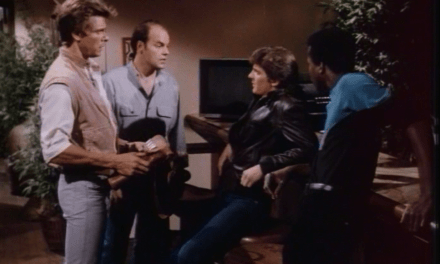In a moment of frustration a few weeks ago I posted the following status update to Facebook:
‘Today’s teaching has felt like dealing with school children with half of my second years turning up to seminars without having done the screening or having been to the lecture.’
To be honest such moments of frustration are relatively rare for me. I love teaching and my students are inspiring individuals to be around. What particularly bothered me the day of the post was the impact that this lack of attendance had on me – in terms of what I had prepared for the seminar – and on those students who had been to the lecture and the screening. I felt very strongly that the students who came prepared should not spend their precious seminar time in discussion with students who would be unable to engage in any meaningful way with the topics at hand. And the response I got from other lecturers on Facebook indicated that I was not alone in my frustrations. The comments ranged from other academics sharing similar experiences, to advice and suggestions on how to increase engagement, to speculation on why students disengage with our teaching in this way.
The whole experience has got me thinking about how we teach television and, after Elke Weissmann’s stimulating post on teaching television two weeks ago, this seemed like an apposite time to discuss the issue. In particular I’ve started to ruminate on the place and role of the screening in television teaching. If my outburst on Facebook asked ‘how do we get students to come to screenings?’, more recently I’ve begun to wonder what place screenings should play in television teaching.
I’ve been fortunate to spend my academic career in departments that have been committed to teaching television and where I have had a lot of control over the curriculum. As such I’ve been lucky not to be faced by some of the issues that Elke rightly raised about the tendency for television teaching to be framed within a solely textual paradigm in which production, distribution and reception are overlooked. Having said that, my television teaching has also been structured by pedagogic models inherited from film studies, specifically the use of weekly screenings (alongside lectures and seminars), where students watch the required television programmes together in a lecture theatre each week. I’ve long felt that this model of teaching makes a lot more sense in relation to teaching cinema than television. The lecture theatre more closely replicates the cinema space, giving students the opportunity communally to watch films projected onto a large screen in the correct ratio and (sometimes) with decent sound quality.

The rather lovely Hallward screening room at the University of Nottingham replicates the cinema space.
By contrast this kind of screening space pulls in the opposite direction for television. It takes television texts out of the context within which they were designed to be viewed (the living room).
This is not to argue that some television programmes don’t reward viewing on a big screen in this way. Or that some television programmes don’t reward being watched communally. One of the real strengths of screening to students in this way is that it opens up the possibility to talk about audience responses. Screening Surprise, Surprise for my students a few weeks ago is a case in point. The episode at hand depicted two half-sisters, one of whom had been adopted at birth, being reunited with their father whom they had never met. The moment when the father was revealed to be a working class Australian with a handlebar moustache was met with derisory laughter by my students. But this was quickly undercut in the face of the raw emotion of the father as he described how his daughter was taken away from him into adoption moments after her birth. Drawing attention to this shared collective response was a useful way to open up a detailed discussion of the ways in which emotion operates in this genre and to challenge some of the value assumptions that circulate around light entertainment.

In other instances, however, the screening in lecture theatres can work to undermine television teaching. I find this to be a particular issue when teaching about the visual style and aesthetics of early television. Programmes designed for small screens with low resolution can be particularly distorted when projected in a lecture theatre, where close-ups become exaggerated and the intimacy between viewer and text can be easily lost. This is not just an issue of screen size but also of context. Viewing individual programmes in a cinema-like lecture theatre takes television overtly out of its domestic context and out of its flow, pulling against the centrality of these two concepts to an understanding of television and television studies. Over and above this there remains the question simply of what to screen when the television text itself is so extensive. How many episodes of news, a soap or long-running series do my students need to watch? What range of programming forms should I be attempting to cover? Should my screenings attempt to replicate the broadcast flow? How does one use screenings to teach about broadcasting as a concept or the changing platforms for engaging with television content?
I ask these questions alongside the broader question of how to get students to attend screenings because I wonder if they are connected. A number of the commentators on my Facebook page offered the solutions that they have adopted to try to prevent students skipping screenings. One suggested not telling students what the screening will be so that they have to attend in person. Others suggested combining the lecture and screening (which I do in all of my teaching) so that the screening is not seen as a bolt on or optional extra. These are useful practical suggestions, but I don’t think they really address the broader issue, which is that we need to understand why students feel that it is not worth attending screenings. I wonder whether the poor attendance stems in part from students failing to fully understand what the screening is for and what they should be doing. I often find that my students fail to take any notes, even though I always give them instructions on what to look for and advise them to write down their observations. Next year we will be introducing a study skills module for our first year students that will address some of these issues, giving students techniques to help them to be more effective in their note-taking in screenings. But television screenings can pose a particular problem where the material can seem to the students to be pretty quotidian, unexceptional or familiar and where we can’t argue that the screening is replicating a more authentic experience of television viewing in the way we might about cinema. Perhaps if we help students understand what screenings are for they will be able to get more out of them and might be more likely to attend. Yet to do that we need to understand whether (and why) the lecture screening is the best way to get students to view television texts.
Over and above this, however, I believe that we need to remember what it was like to be a student and to try to think about the teaching and learning experience from their perspective. As a drama student in the early 1990s most of my teaching was in three-hour seminars in small groups – very different from what would be possible now. This made it difficult to hide in class – you knew that at some point you would be called on to participate. It also meant that we really got to know each other and our lecturers. We also received a grade for attendance and participation in seminars that required us to attend 70% of classes per module and encouraged involvement and preparation (something that I also use in some of my teaching today). However, while all of this meant that I tended to be well prepared when turning up to class, I have to confess that I made full use of the attendance requirements and would regularly skip 30% of the classes because that was allowed within the rules. On only one module (about film history) did we have a screening element. While I very diligently attended the screenings, again I have to confess that I would regularly fall asleep for the middle 30 minutes or so of the films screened after I discovered that I could generally still engage in intelligent conversation in seminars about movies even if I’d missed the middle. In my defense I should add that I was not (at that point) particularly interested in cinema and the degree was very demanding of my time. I threw myself into the departmental plays, was regularly working on assessed and non-assessed student productions in the evenings and weekends and was genuinely tired a lot of the time. I bring up these anecdotes by way of a reminder that we need to think about two things when structuring our teaching and learning. First we need to think carefully about the rules that we create around our teaching and learning and the expectations that they give to students. The module that was the subject of my Facebook post contains a 10% grade for participation (and attendance) in seminars. It’s quite possible that this sends a signal to students that seminars are the core component of the teaching and learning for the module, with lectures and screenings as secondary add-ons. We need to think about creating the conditions in which students understand and appreciate the value of lectures and screenings. Second we need to remind ourselves of what it is like to be a University student away from home, often for the first time. We need to remember that our students are engaged in whole sets of new experiences and are learning to manage their lives for the first time. We need to engage with them, as much as possible, as individuals, even if pressures on staff-student ratios and contact hours pull against this.
I do believe that there is much merit in the lecture-room screening as a way of teaching television. But I’d be interested to hear people’s thoughts and experiences of alternative ways of integrating the viewing of television programmes into teaching and how we might understand why what we are currently doing might not be working for our students.
Catherine Johnson is a lecturer in the Department of Culture, Film, and Media at the University of Nottingham. She is the author of Branding Television and Telefantasy and co-editor of Transnational Television History and ITV Cultures. Her current research examines the broader creative industry sector that produces promotional material for the screen industries.





